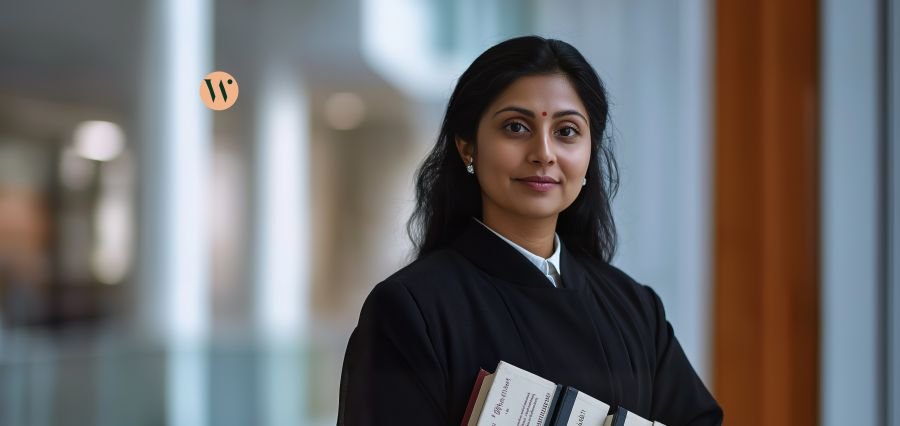Able Women
The Indian judiciary, which is a dynamic and living system, has been transforming in its very nature, and at the focal point of the transformation are the growing eminent and powerful roles taken by women lawyers. For centuries, the Indian bar, like the rest of the world to a great extent, was a men’s preserve. But the endless work, unshakeable commitment, and clear intellect of women have progressively eroded the obstacles, creating a vital window for them to enter and exit of their lasting mark. Now, women lawyers are no longer mere statistics; they are defining quite significantly the contours of Indian law, ushering new trends, arguing social justice, and imparting a permanent stamp on the equitable and just dispensation of law.
The record of women professionals in the Indian legal profession has been one of their resilience and grit. The beginning of the 20th century witnessed a new milestone with the Legal Practitioner’s (Women) Act of 1923, which made it legally feasible for women to practice law. Women like Cornelia Sorabji, India’s first woman advocate, struggled long to gain this right and opened doors for others to tread. Though this legislative achievement, it was not an easy battle. Women had to fight against the biases of society, doubts about their professional capabilities, and an undeniable lack of opportunities in the all-male environment. Women were not accepted by few law firms, and when they did accept them, women were normally excluded from important cases, limited to secondary status if they did get accepted.
But for the determination of these early trailblazers and future generations of female lawyers, these discriminatory procedures were slowly eliminated. Post-independence years saw the slow but consistent coming out of women into the judicial world. Trailblazers such as Justice Anna Chandy, India’s first lady judge in 1937, and subsequently Justice Fathima Beevi, India’s first lady Supreme Court judge of 1989, shunned glass ceilings and inspired hundreds of others to pursue the practice of law and the courts. Their presence in such senior positions challenged conventional thinking and showed women to be able and effective practitioners in the legal field.
The contribution of women lawyers goes beyond their sheer number in courtrooms and chambers. They have brought with them a different type of approach towards interpretation and application of law, particularly in the matter of presenting cases that were initially neglected or insufficient. Through their empathetic practice and the astute realization of the sociological dynamics of society, they have contributed immensely towards gendered consideration of the impact of the law and more inclusive and enabling legal systems.
Very likely, the greatest overall contribution of women lawyers has been in the area of human rights and social justice. Several of them have made it their vocation to champion the cause of advancing the rights of marginalized groups, such as women, children, and minorities. Lawyers such as Indira Jaising, who is a well-known human rights lawyer, have spearheaded historic cases on gender equality, environmental rights, and poor people’s rights. Her unyielding quest for justice has not merely resulted in legal relief to thousands but has also shaped public opinion and policy change.
In addition, women attorneys have spearheaded the forefront in building feminist jurisprudence in India. They have challenged patriarchal norms within the law, propagating legislation that acknowledges and addresses the unique vulnerabilities and experiences of women. Their efforts have led to sweeping legal reforms in areas such as domestic violence, sexual harassment at the workplace, and matrimonial law. The iconoclastic Vishaka Guidelines, widely enunciated by the Supreme Court as a move towards curbing sexual harassment at the workplace, were the direct result of initiatives on the part of activism in developing a work culture which is gender-sensitive in its approach.
In the corporate law profession, women attorneys such as Zia Mody have shown exceptional capability and leadership, smashing glass ceilings in traditionally masculine field zones such as mergers and acquisitions and company law. Not only did they inspire but also motivate other women to become lawyers and further injected complex commercial transactions with greater diversity and a sense of belonging.
While unprecedented developments have taken place despite, Indian women lawyers also have many issues to contend with. Gender bias continues to operate in many different ways, cutting across employment, promotion, and allocation of senior cases. Time management of work duties against household requirements continues to be a daunting task for most women lawyers. Inadequate support systems like affordable child care and flexible hours may disproportionately affect women’s careers. In addition, underrepresentation in senior roles in law firms and courts of law remains an issue, for which concerted effort is necessary to provide equal opportunity and break the “glass ceiling.”
The changing Indian legal system is increasingly recognizing the worth of women lawyers. Their different outlook, commitment to justice, and fight for a more equal society are essential to the continued growth and credibility of the legal system. With increasing numbers of women entering the legal profession and assuming roles of power, Indian law in the years to come will be determined by them without doubt and become more representative, equitable, and inclusive of all the hopes and aspirations of all the diverse masses of its citizens. The journey continues, but the impact that women lawyers have made on the Indian legal system cannot be overlooked and will continue to play a larger role in the future.
Read also : From Confusion to Clarity | How a Study Abroad Consultant Can Transform Your Journey




